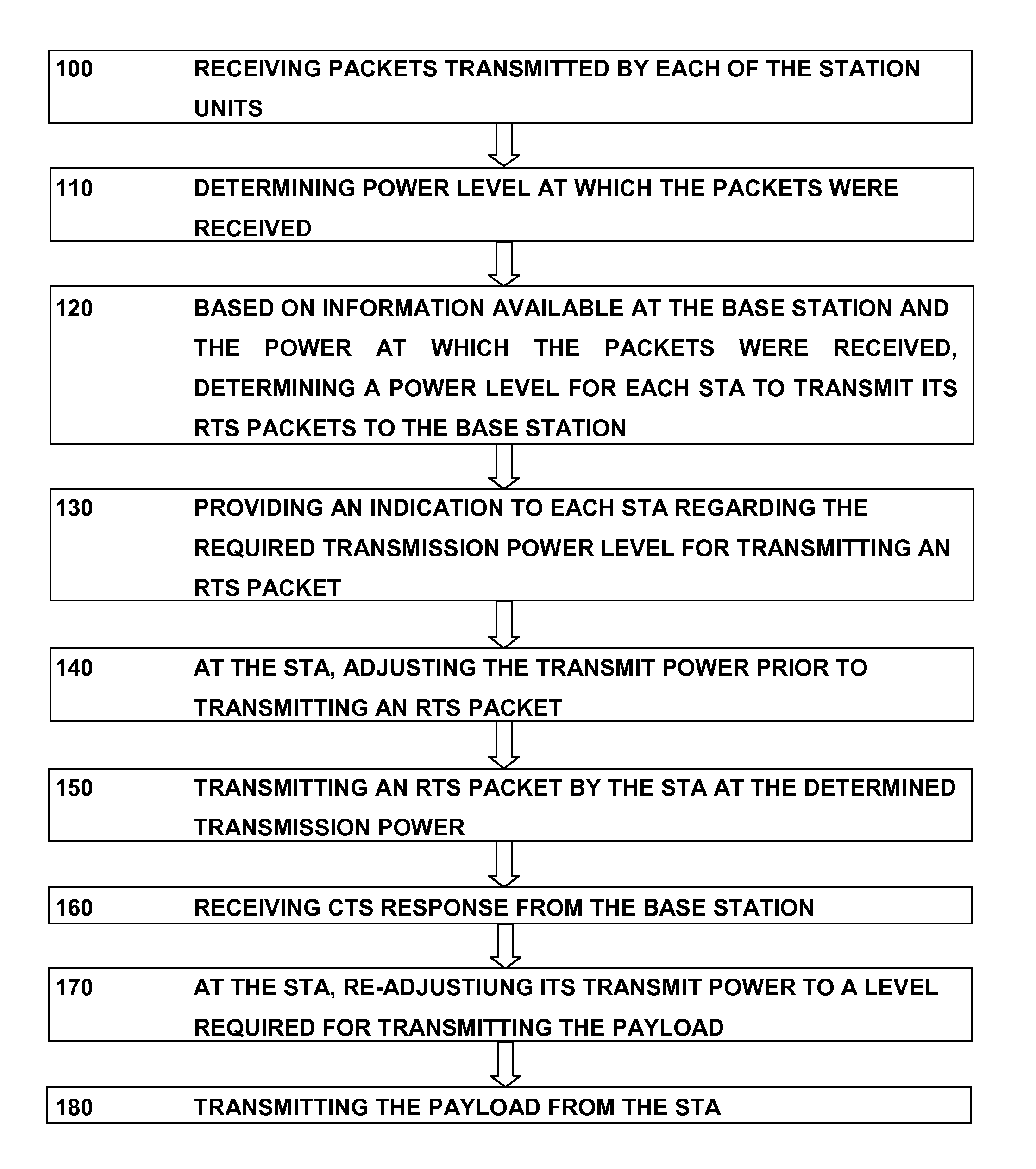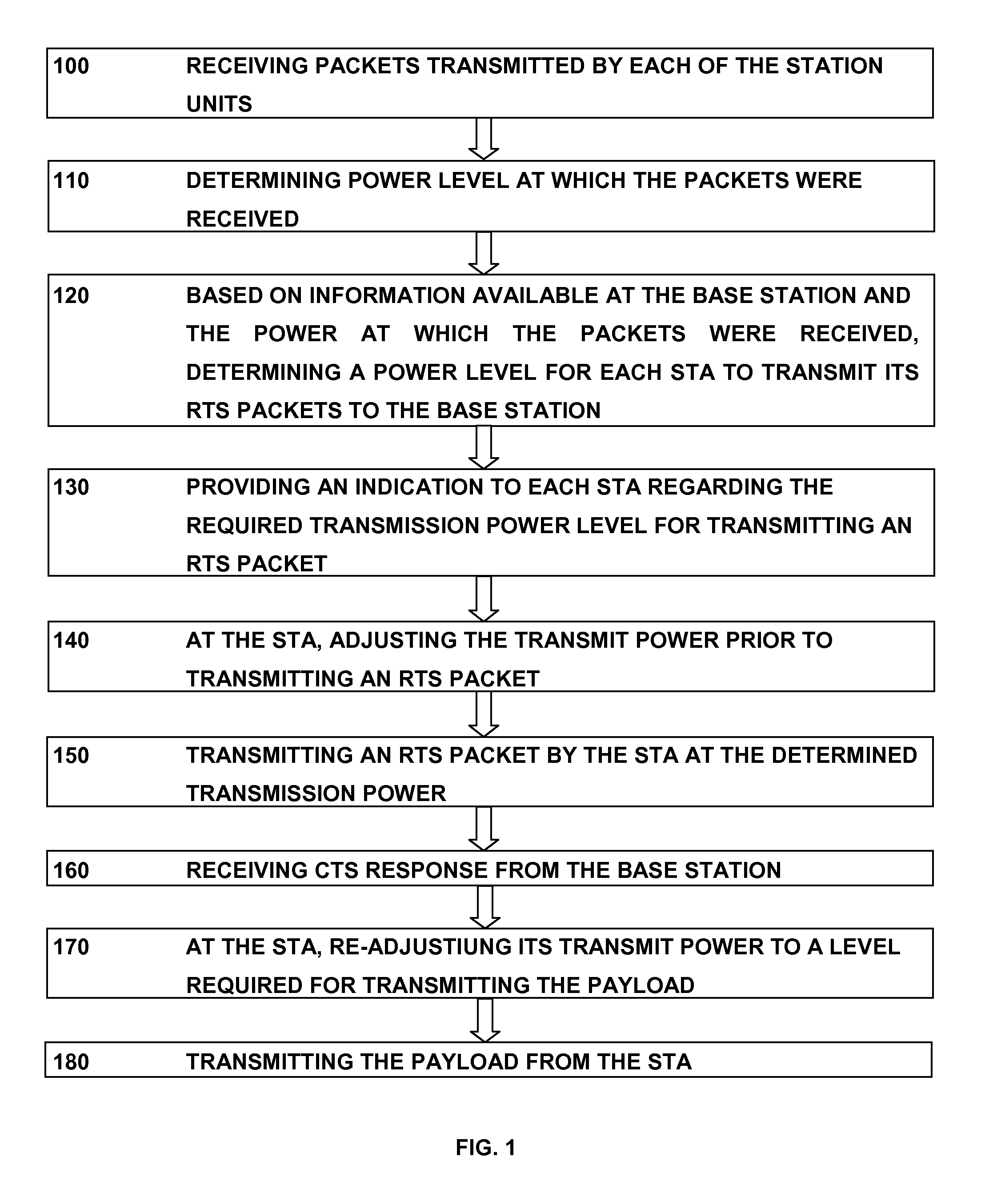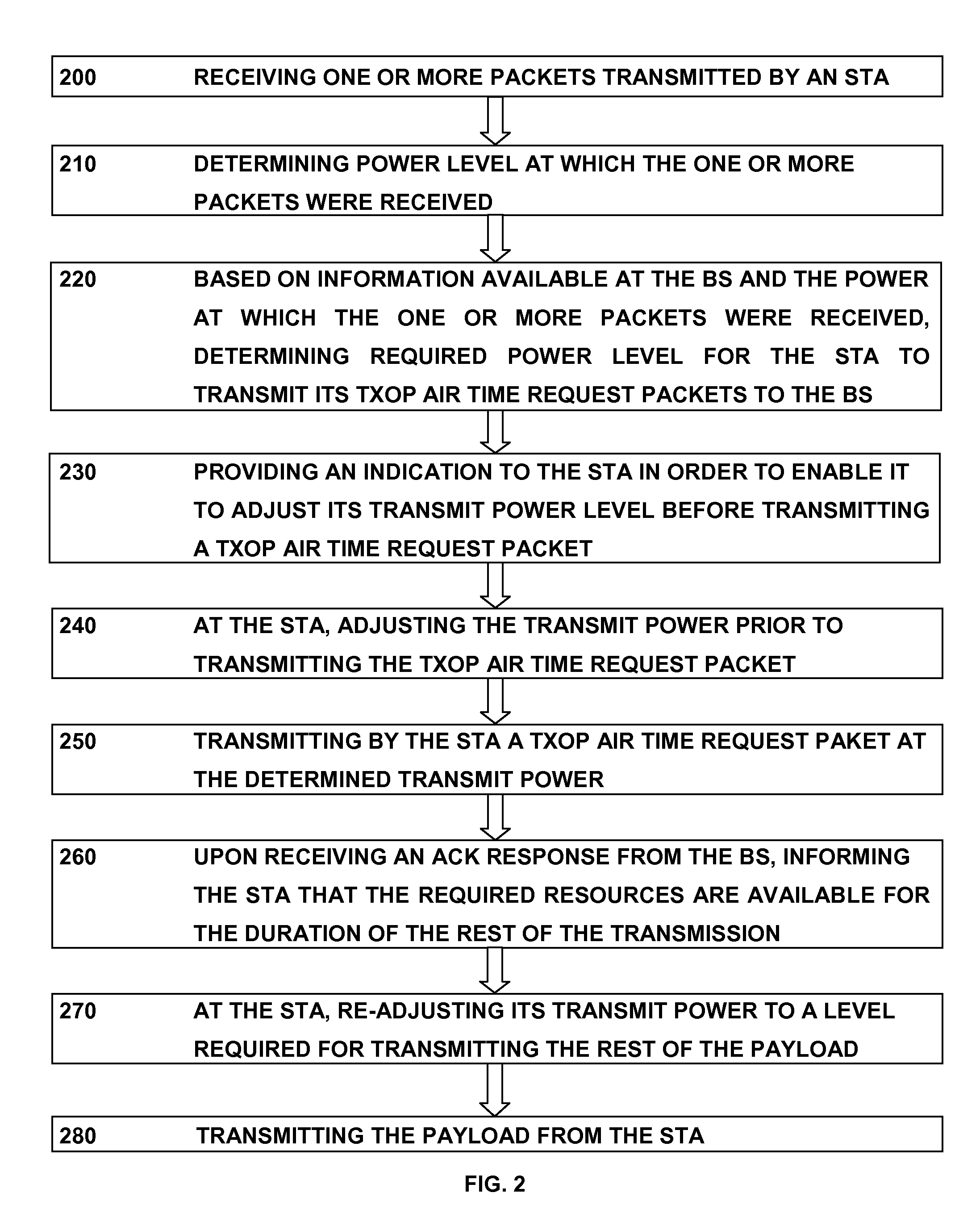Method and system for affecting power control in a wireless network
a wireless network and power control technology, applied in the field of wireless local area networks, can solve the problems of low air efficiency, increased problem, and possibility of collision still occurring, and achieve the effect of increasing reducing the number of wireless stations
- Summary
- Abstract
- Description
- Claims
- Application Information
AI Technical Summary
Benefits of technology
Problems solved by technology
Method used
Image
Examples
Embodiment Construction
[0051]In this disclosure, the verb “comprise” is intended to have an open-ended meaning so that when a first element is stated to comprise a second element, the first element may also include one or more other elements that are not necessarily identified or described herein, or recited in the claims.
[0052]In the following description, for the purposes of explanation, numerous specific details are set forth in order to provide a thorough understanding of the present invention. It should be apparent, however, that the present invention may be practiced without these specific details.
[0053]The present invention may be implemented in WLAN systems in which station units need to transmit their own requests in order for their access point (e.g. base station) to refrain and prevent other stations from occupying radio resources, e.g. air time, for them to transmit. Such stations are typically unsynchronized endpoints using the CSMA / CA contention protocol, such as one of the various IEEE 802....
PUM
 Login to View More
Login to View More Abstract
Description
Claims
Application Information
 Login to View More
Login to View More - R&D
- Intellectual Property
- Life Sciences
- Materials
- Tech Scout
- Unparalleled Data Quality
- Higher Quality Content
- 60% Fewer Hallucinations
Browse by: Latest US Patents, China's latest patents, Technical Efficacy Thesaurus, Application Domain, Technology Topic, Popular Technical Reports.
© 2025 PatSnap. All rights reserved.Legal|Privacy policy|Modern Slavery Act Transparency Statement|Sitemap|About US| Contact US: help@patsnap.com



